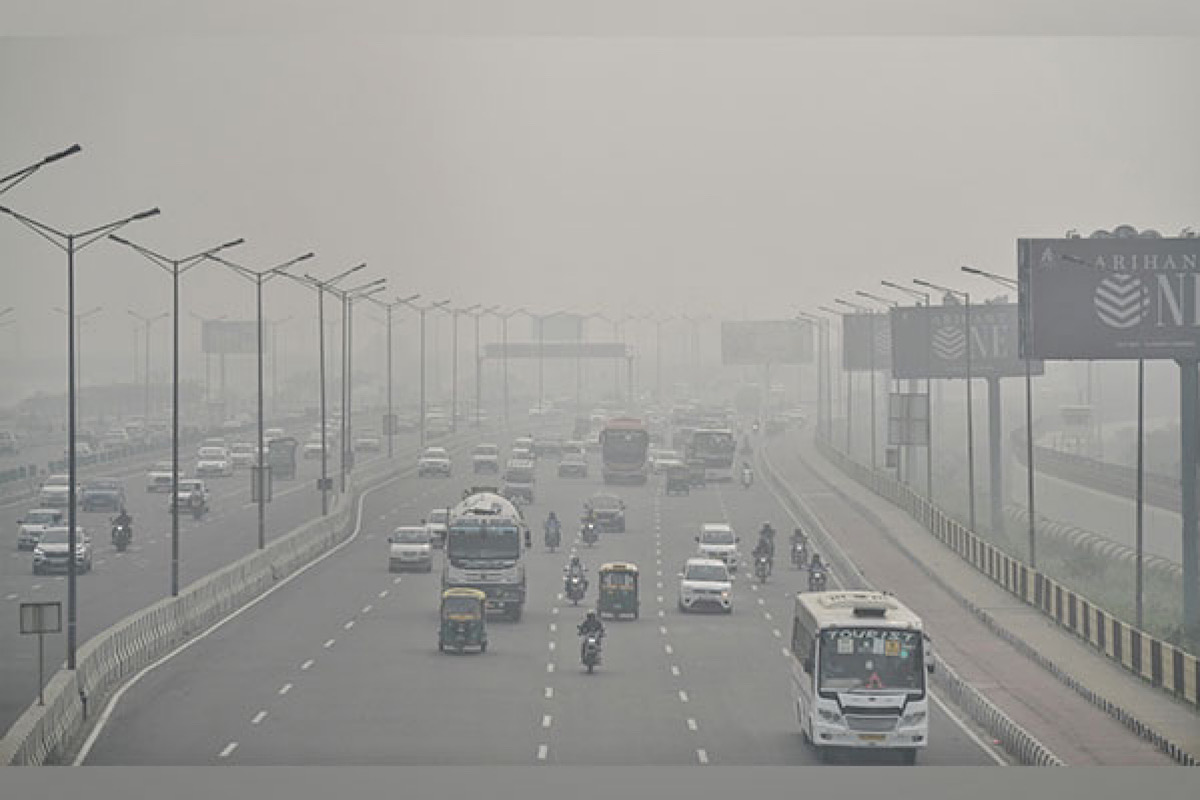Drunk riders fall off flyover in Delhi
A tragic accident occurred on Geeta Colony flyover, resulting in one fatality and another person sustaining serious injuries, police said on Sunday.
National capital’s average air quality on Monday slipped into the ‘very poor’ category for the first time in the season, as the residents of the city woke up to a hazy morning with smog also visible at some places.

Air pollution (Photo:ANI)
National capital’s average air quality on Monday slipped into the ‘very poor’ category for the first time in the season, as the residents of the city woke up to a hazy morning with smog also visible at some places.
People, especially those out for morning walks and outdoor activities in the early hours have expressed displeasure over the worsening air quality, something very discouraging for those who are health conscious, and an alarming sign for the elderly, already suffering from respiratory issues.
Advertisement
Several commoners heading towards their workplaces expressed dissatisfaction and said they felt itching in eyes and dryness in the throat.
Advertisement
The average Air Quality Index (AQI) of Delhi was recorded at 310, according to the Central Pollution Control Board(CPCB), which is presently in the lower end of the ‘very poor’ category.
Anand Vihar, which is one of the pollution hotspots of the city, recorded an AQI of 366, while RK Puram clocked the pollution level at 352, Shadipur and Wazirpur were at 351.
So far, the Indian Institute of Tropical Meteorology (IITM) suggests that the situation is likely to remain the same till Thursday.
According to the IITM’s air quality and weather bulletin for the city, “The outlook for subsequent 6 Days: The air quality is likely to be in the Very Poor category. Meteorological conditions are unfavourable for effective dispersion of pollutants as calm winds prevail during night.”
The weather agency has also said that additional emissions from sources such as stubble/ waste burning are likely to deteriorate air quality significantly.
Situation was the worst across the pollution hotspots in the city including Narela, Bawana, Mundka, Wazirpur, Rohini, R K Puram, Okhla, Jahangirpuri, Anand Vihar, Punjabi Bagh, Mayapuri, and Dwarka Sector-8.
Talking to ‘The Statesman’, an employee working for a private company who travels from Anand Vihar to Connaught Place, said he has started using a ‘mask,’ and added that during this time of the year, he has to be more cautious as he is prone to respiratory issues.
According to the pollution monitoring agency, the AQI when marked under the ‘Very Poor’ category can cause respiratory illness on prolonged exposure.
If the situation remains unchanged, the Commission for Air Quality Management (CAQM) in the National Capital Region and adjoining areas may consider invoking measures and restrictions under the Graded Response Action Plan’s stage- 2, which is implemented when the AQI levels stay in the ‘very poor’ category.
Anti-pollution plan GRAP for the NCR has been classified under four different stages of adverse air quality in Delhi that include stage- I ‘Poor’ (AQl 201 – 300), Stage – ll ‘Very Poor (AQl 301- 400), Stage – lll ‘Severe'(AQl 401- 450) and Stage- lV ‘Severe (+) ‘(AQl >450) respectively.
As per the CAQM, based on the dynamic model and weather/ meteorological forecast by IMD / llTM on a day to day basis, actions under Stages ll, lll and lV of the Graded Response Action Plan (GRAP) shall be invoked in advance of the AQI reaching to the projected levels of that stage, also provided that the higher projected AQI levels sustain for longer periods (say 3 days or more).
Meanwhile, according to the CPCB, an AQI between zero and 50 is considered “good”; 51 and 100 “satisfactory”; 101 and 200 “moderate”; 201 and 300 “poor”; 301 and 400 “very poor”; and 401 and 500 “severe”.
Advertisement